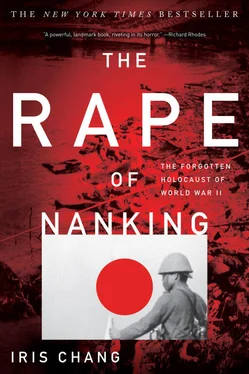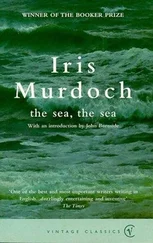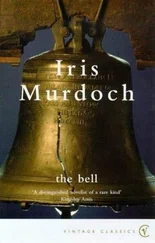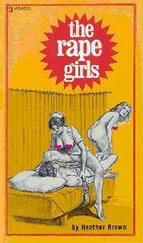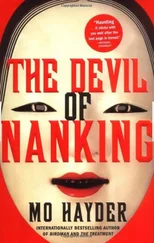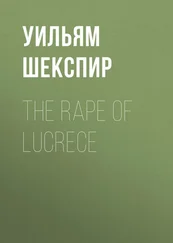132. “What a heartbreaking sight!”: Ibid., December 17, 1937, pp. 115–16.
133. “Never shall I forget that scene”: Ibid., pp. 117–18.
134. On at least one occasion Japanese soldiers: Ibid., December 27, 1937, p. 130.
134. “the lottery”: Source Materials Relating to the Horrible Nanking Massacre (1985), pp. 9–10.
134. On New Year’s Day 1938, Vautrin rescued: Minnie Vautrin, diary 1937–40, January 1, 1938, p. 137.
134. “fierce and unreasonable”: Ibid., December 18, 1937, pp. 119–20.
134. “The request was that they be allowed”: Ibid., December 24, 1937, p. 127.
135. “Group after group of girls”: Ibid.
135. A week after the city fell: Enclosure to report, “Conditions in Nanking,” January 25, 1938, Intelligence Division, Naval Attaché Reports, 1886–1939, Records of the Office of the Deputy Chief of Naval Operations, 1882–1954, Office of Naval Intelligence, box 996, entry 98, record group 38, National Archives; Hu Hua-ling, “Chinese Women Under the Rape of Nanking,” p. 69.
135. Vautrin noticed that the men who arrived: Minnie Vautrin, diary 1937–40, December 28, 1937, p. 131.
135. In a few cases the zone leaders were successful: Fitch, My Eighty Years in China, p. 117.
135. “This proved to be a bluff”: John Magee, letter to his wife, December 30, 1937, archives of David Magee.
136. The Draconian threats of the Japanese: Hsu Shuhsi, Documents of the Nanking Safety Zone , p. 84.
136. “You must follow the old customs of marriage”: Minnie Vautrin, diary 1937–40, December 31, 1937, p. 135.
136. Vautrin observed that the Japanese soldiers: Ibid., January 4, 1938, p. 141.
136. The soldiers also forced the women: Ibid., January 6, 1938, p. 144.
136. “because a mother or some other person could vouch for them”: Ibid., December 31, 1937, p. 135.
136. After registration, the Japanese tried to eliminate the zone itself: Ernest Forster, letter of January 21, 1938, Ernest and Clarissa Forster Collection.
136. February 4 was given as the deadline: (Authorship unknown, but probably Lewis Smythe), letter of February 1, 1938, box 228, record group 8, Yale Divinity School Library.
137. Vautrin was wary of these promises: Minnie Vautrin, diary 1937–40, February 4, 1938, p. 183.
137. crammed themselves into verandas: Minnie Vautrin, diary 1937–40, December 18, 1937.
137. “slept shoulder to shoulder”: (unidentified author at 145 Hankow Road), letter of February 12, 1939, Ernest and Clarissa Forster Collection.
137. “Oh, God, control the cruel beastliness”: Minnie Vautrin, diary 1937–40, December 16, 1937, p. 114.
137. “Don’t you people worry”: Hsu Chi-ken, The Great Nanking Massacre: Testimonies of the Eyewitnesses (Taipei, 1993), pp. 56–57.
137. “You do not need to wear this rising sun emblem”: Ibid., p. 60.
138. “China has not perished”: Hua-ling W. Hu, “Miss Minnie Vautrin: The Living Goddess for the Suffering Chinese People During the Nanking Massacre,” Chinese American Forum 11, no. 1 (July 1995): 20; from Ko Chi, “Recording with Blood and Tears the Fallen Capital,” in Source Materials Relating to the Horrible Nanking Massacre (1985).
138. “She didn’t sleep from morning till night”: Huang Shu, interview with filmmaker Jim Culp; transcript from the personal archives of Jim Culp, San Francisco.
138. “It was said that once she was slapped”: Ko Chi, “Blood and Tears,” p. 16; Hua-ling W. Hu, “Miss Minnie Vautrin,” p. 18.
138. Christian Kröger, a Nazi member: Christian Kröger, “Days of Fate in Nanking,” unpublished report, January 13, 1938, archives of Peter Kröger.
138. Looting and arson made food so scarce: Minnie Vautrin, diary 1937–40, March 4, 1938, p. 208; on mushrooms, see Liu Fonghua, interview with the author, Nanking, People’s Republic of China, July 29, 1995.
138. They not only provided free rice: Lewis S. C. Smythe to Tokuyasu Fukuda, Attaché to the Japanese Embassy, enclosure no. 1 to report entitled “Conditions in Nanking,” January 25, 1938, Intelligence Division, Naval Attaché Reports, 1886–1939, Records of the Office of the Deputy Chief of Naval Operations, 1882–1954, Office of Naval Intelligence, box 996, entry 98, record group 38, National Archives.
138. Yet they acted as bodyguards: James McCallum, diary, December 30, 1937, Yale Divinity School Library.
139. “threatened Riggs with his sword”: Hsu Shuhsi, Documents of the Nanking Safety Zone , p. 24.
139. A Japanese soldier also threatened professor Miner Searle Bates: “Cases of Disorder by Japanese Soldiers in Safety Zone,” subenclosure to enclosure no. 1–c, Intelligence Division, Naval Attaché Reports, 1886–1939, Records of the Office of the Deputy Chief of Naval Operations, 1882–1954, Office of Naval Intelligence, folder H–8-B Register#1727A, box 996, entry 98, record group 38, National Archives.
139. Another soldier pulled a gun on Robert Wilson: Diary of John Magee in long letter to his wife, entry for December 19, 1937, archives of David Magee.
139. Still another soldier fired a rifle at James McCallum: “Cases of Disorder by Japanese Soldiers in Safety Zone,” subenclosure to enclosure no. 1-c, Intelligence Division, Naval Attaché Reports, 1886–1939, Records of the Office of the Deputy Chief of Naval Operations, 1882–1954, Office of Naval Intelligence, folder H–8–B Register#1727A, box 996, entry 98, record group 38, National Archives.
139. When Miner Searle Bates visited the headquarters: John Magee to “Billy” (signed “John”), January 11, 1938, Ernest and Clarissa Forster Collection.
139. Hatz defended himself with a chair: John Rabe diary, December 22, 1937, entry, pp. 341–42.
139. The zone eventually accommodated: In “Days of Fate in Nanking,” Christian Kröger states his belief that 200,000–250,000 refugees fled into the zone on December 12; Miner Searle Bates (“Preliminary Report on Christian Work in Nanking,” archives of Shao Tzuping) echoes the figure of 250,000; the estimate of 300,000 refugees in the zone comes from the IMTFE testimony of Hsu Chuang-ying, who was in charge of housing for the zone; see IMTFE transcript, entry 319, record group 331, p. 2561, National Archives.
CHAPTER 6: WHAT THE WORLD KNEW
144. Special meals of Nanking noodles: Morris-Suzuki, Showa, p. 34.
144. Durdin, a twenty-nine-year-old reporter from Houston: Frank Tillman Durdin, telephone interview with the author, January 1996.
144. Steele was an older correspondent: A. T. Steele Collection, Arizona State University Library.
144. McDaniel was perhaps the most daring: C. Yates McDaniel, “Nanking Horror Described in Diary of War Reporter,” Chicago Tribune, December 18, 1937.
144. Not only did they write riveting stories: The first American reporter to break the full story of the massacre was Archibald Steele. When the correspondents boarded the Oahu, the twenty-nine-year-old Durdin was unable to send any dispatches out by radio because the operator said it was against regulations. But somehow Steele got his stories out. “I think he slipped him a $50 bill or something!” Durdin exclaimed decades later in “Mr. Tillman Durdin’s Statement on the News Conference—Refuting the Distortions of His Reports on the Great Nanking Massacre by the Japanese Media” ( Journal of Studies of Japanese Aggression Against China , August 1992, p. 66). “I was new and young, Steele was an old hand. So he scooped me on the story.”
Читать дальше
